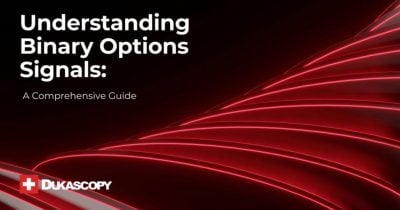Understanding binary options signals: a comprehensive guide

Share this article
In the fast-paced world of financial markets, binary options have emerged as a popular trading instrument for both newcomers and experienced traders. Their straightforward premise – predicting whether an asset’s price will rise or fall within a specified timeframe – has attracted individuals seeking to diversify their investment portfolios. However, making consistent profits in binary trading requires more than just gut feelings or random guesses. This is where binary options signals come into play.
What Are Binary Options Signals?
Binary options signals are essentially trading recommendations provided by professional analysts or generated by sophisticated algorithms. These signals suggest when to enter a trade, which direction to take (call or put), which asset to trade, and at what expiry time. Think of them as navigational aids in the complex sea of financial markets, helping traders make more informed decisions without having to conduct extensive analysis themselves.
Most signal providers deliver their recommendations through various channels such as email, SMS, specialized apps, or dedicated websites. The typical signal contains crucial information:
- Asset to trade (e.g., EUR/USD, Gold, Apple stocks)
- Direction (Call if you expect the price to rise, Put if you expect it to fall)
- Strike price (the price level at which to enter the trade)
- Expiry time (when the option contract ends)
- Sometimes, a confidence level indicating the signal’s potential accuracy
Types of Binary Options Signals
Manual Signals
These are generated by human analysts who examine market conditions, technical indicators, charts, and economic news. The quality of manual signals depends heavily on the analyst’s expertise, experience, and analytical skills. While they may incorporate a nuanced understanding of market psychology that automated systems might miss, they’re also susceptible to human error and emotional bias.
Automated Signals
Automated signals are produced by algorithms and software that analyze market data without human intervention. These systems typically use mathematical models and technical indicators to identify potential trading opportunities. Their advantages include:
- Speed: They can process vast amounts of data in seconds
- Consistency: They follow pre-defined rules without emotional interference
- 24/7 operation: They can monitor markets continuously
However, they may struggle to adapt to unexpected market events or fundamental shifts in market conditions that haven’t been programmed into their algorithms.
Hybrid Signals
As the name suggests, hybrid signals combine both automated analysis and human oversight. The initial screening of trading opportunities is handled by algorithms, while the final decision to issue a signal is made by experienced traders. This approach aims to leverage the strengths of both methods while minimizing their weaknesses.
How Binary Options Signals Work
The process behind generating binary options signals involves several steps:
- Data Collection: Signal providers gather data from various sources, including price charts, economic calendars, market news, and sometimes social sentiment indicators.
- Analysis: This data is then analyzed using various methodologies:
- Technical analysis examines price patterns, trends, and mathematical indicators
- Fundamental analysis looks at economic factors affecting asset prices
- Sentiment analysis gauges market participants’ attitudes and expectations
- Signal Generation: Based on the analysis, trading opportunities are identified and formatted into actionable signals.
- Distribution: The signals are sent to subscribers through the chosen communication channel.
- Execution: Traders receive the signals and decide whether to act on them by placing trades on their binary options platforms.
The Future of Binary Options Signals
As technology evolves, so do binary options signals. Several trends are shaping their future:
AI and Machine Learning
Advanced algorithms capable of learning from outcomes are creating more sophisticated signal generation systems that can adapt to changing market conditions.
Social Trading Integration
Some platforms now combine signals with social trading features, allowing users to see how others are responding to particular signals and their results.
Customization
Newer services offer personalized signals based on individual trading preferences, risk tolerance, and available trading hours.
This article was created using Dukascopy’s advanced analytical tools.
